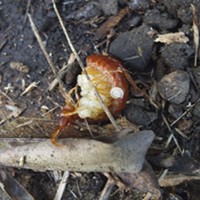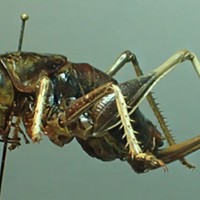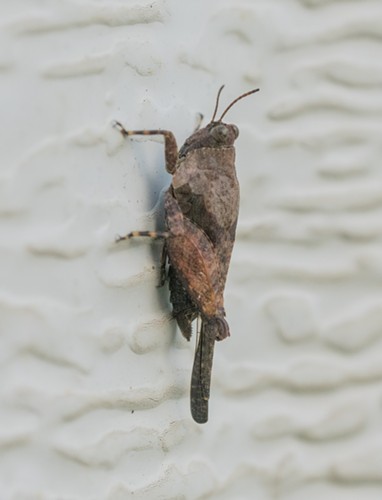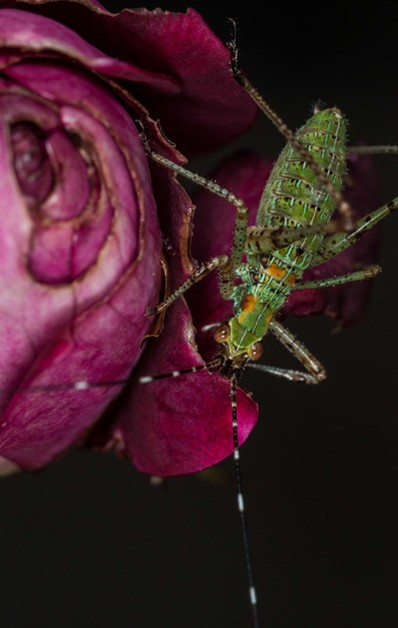Sunday, February 12, 2017
HumBug: Winter Pygmies
Posted By Anthony Westkamper on Sun, Feb 12, 2017 at 3:00 PM
Today, on the front garage door was the tiniest grasshopper you are ever likely to see, its body measuring about ½ inch long. Its general body shape, short antennae, and large hind legs, were unmistakably those of a grasshopper (sub order Caelifera). Its size, coloration and the fact that it was out in the middle of winter told me it was a member of the Tetrigidae family or grouse locusts also known as pygmy grasshoppers. Both regular grasshoppers and their pygmy cousins are members of the order Orthoptera, which also includes crickets, camel crickets, Jerusalem crickets and katydids (all of which have long antennae).
Unlike most other grasshopper families, adults of this group are known to survive through winter. During the summer I've seen many of these tiny hoppers along river bars, where they feed on algae on rocks. With the river swollen from recent rains, I guess they've headed for higher ground. This is the third one I've seen lately at my house which is about half a mile from the nearest river.
Once I get my fly tying paraphernalia back together I may try to imitate these. Since they live so near the water, the fish may well see them as a tasty and familiar morsel.
Speaking of...
-

HumBug: Three for a Rainy Day
Jan 26, 2020 -

HumBug: Bugs from Long Ago and Last Night
Feb 17, 2019 -

HumBug: Why No Cricket Choruses?
Sep 3, 2017 - More »
Readers also liked…
more from the author
-
HumBug: Early Spring Pollinators
- Apr 12, 2020
-
HumBug: A Recipe for History
- Apr 5, 2020
-
HumBug: Bugs in the City
- Mar 29, 2020
- More »


































